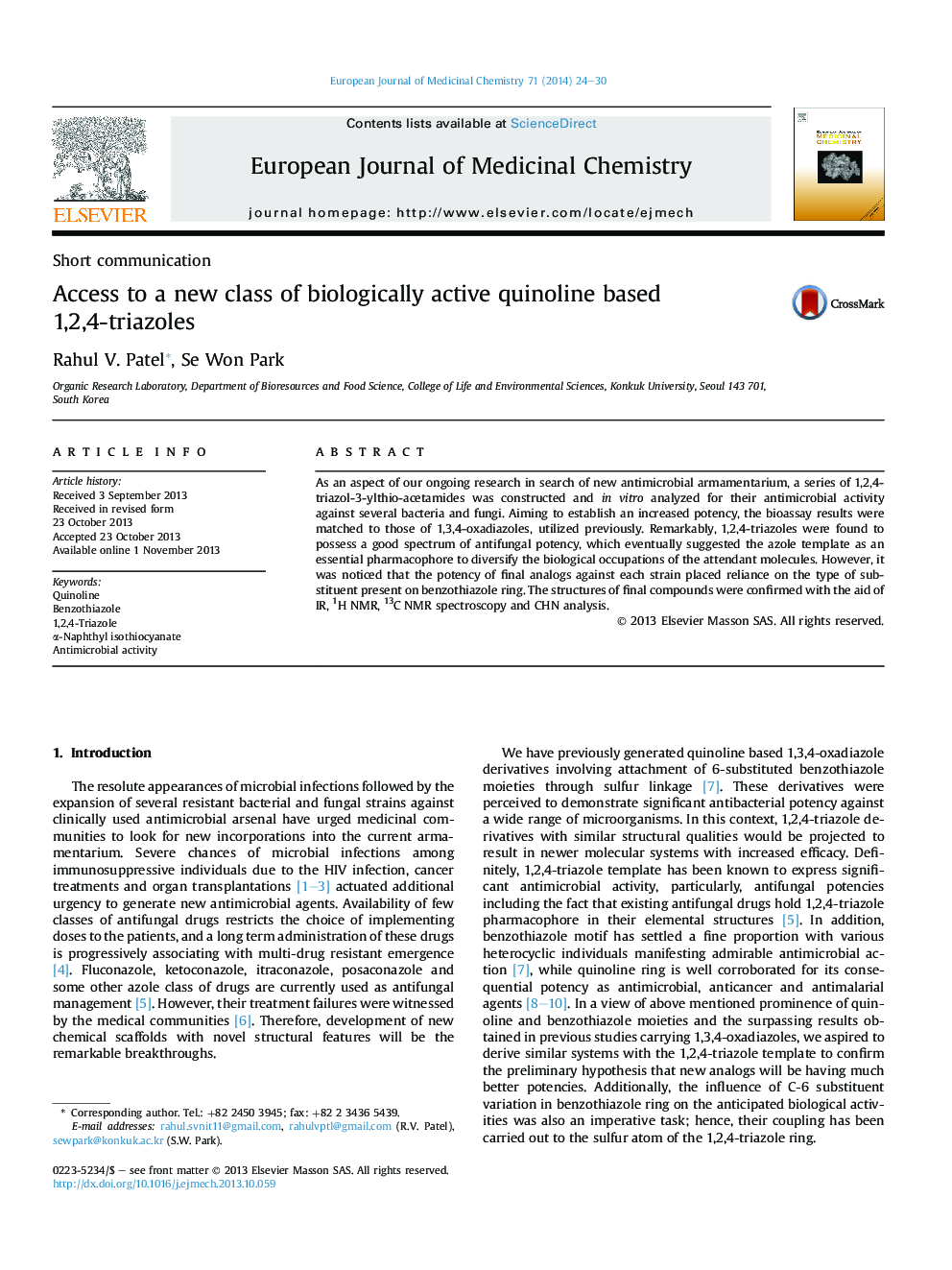| Article ID | Journal | Published Year | Pages | File Type |
|---|---|---|---|---|
| 1392607 | European Journal of Medicinal Chemistry | 2014 | 7 Pages |
•A new class of quinoline based benzothiazolyl-1,2,4-triazoles has been synthesized.•Analogs exhibited 6.25–50 μg/mL of MICs on in vitro antimicrobial examinations.•1,2,4-Triazoles indicated increased antifungal potency than antibacterial action.•N-1 position of 1,2,4-triazole ring may be considered as the future target.
As an aspect of our ongoing research in search of new antimicrobial armamentarium, a series of 1,2,4-triazol-3-ylthio-acetamides was constructed and in vitro analyzed for their antimicrobial activity against several bacteria and fungi. Aiming to establish an increased potency, the bioassay results were matched to those of 1,3,4-oxadiazoles, utilized previously. Remarkably, 1,2,4-triazoles were found to possess a good spectrum of antifungal potency, which eventually suggested the azole template as an essential pharmacophore to diversify the biological occupations of the attendant molecules. However, it was noticed that the potency of final analogs against each strain placed reliance on the type of substituent present on benzothiazole ring. The structures of final compounds were confirmed with the aid of IR, 1H NMR, 13C NMR spectroscopy and CHN analysis.
Graphical abstractA new class of quinoline based 1,2,4-triazoles has been equipped with potent antifungal efficacy. Effect of substitution pattern of different pharmacophore in the designed scaffold system on antimicrobial activity is elaborated.Figure optionsDownload full-size imageDownload as PowerPoint slide
